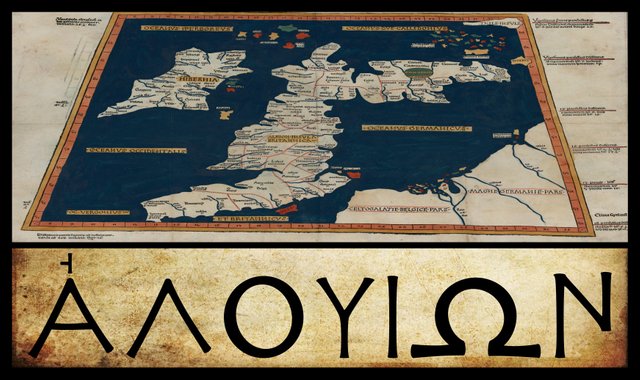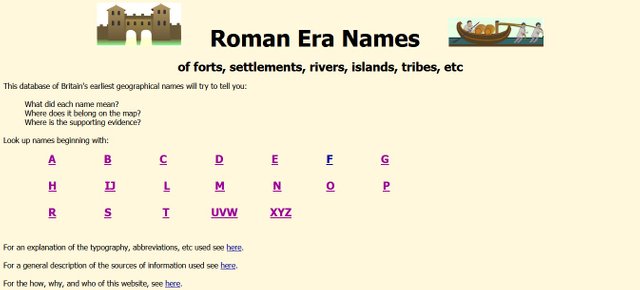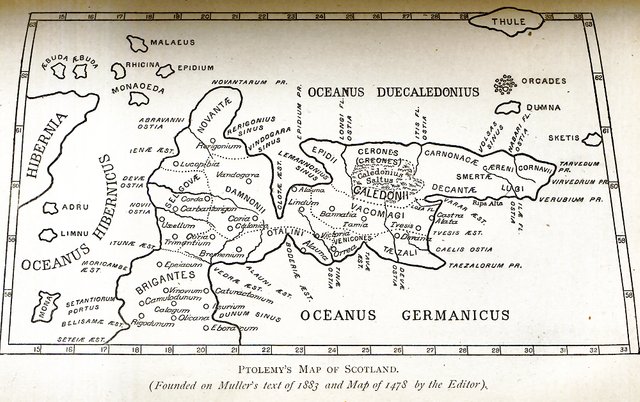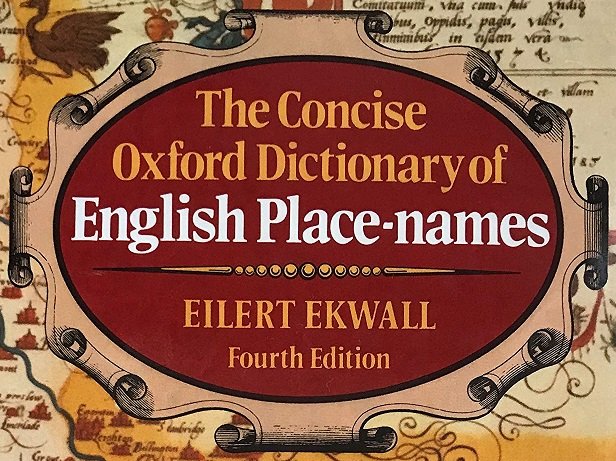
In his description of Ireland—Geography, Book 2, Chapter 2—Claudius Ptolemy records the names and coordinates of 15 river mouths, 5 promontories, 11 settlements, 16 tribes, and 9 islands. In the sixty preceding articles in this series, we have discussed every one of these pieces of data, as well as the names he gives to the surrounding seas. Before drawing some final conclusions, let us take a brief look at Ptolemy’s description of Ireland’s sister isle, Britain, or, as Ptolemy calls it, Alvion [Αλουιων].
Ptolemy’s description of Britain—Geography, Book 2, Chapter 3—is considerably more extensive than his description of Ireland. It comprises, all told, 165 pieces of data, compared to Ireland’s 60. This is partly due to the fact that Britain is larger than Ireland, but that is only half the story. When Ptolemy compiled his Geography—circa 150 CE—, much of Britain had been colonized by the Romans and formed an integral part of the Empire. Detailed, contemporary information was widely available for Britain. Ireland, however, was never incorporated into the Roman domains, so information about it was much more sparse. Ptolemy, as T F O’Rahilly has cogently argued, was probably obliged to draw on the out-of-date account by Pytheas of Massalia, who visited these islands around 325 BCE (O’Rahilly 39-42).
The identification of many of Ptolemy’s British landmarks—especially the cities or settlements—is still problematic, but what can be said about their names from a linguistic point of view? Rather than embark on another series of articles in which all 165 items are examined one by one, let’s instead try to appraise them all in a single glance, as it were. Fortunately, several scholars have undertaken comprehensive surveys of the data, so there is no shortage of material to draw on.

Roman Era Names
The expert contributors to the etymological website Roman Era Names have created an online database of Britain’s earliest geographical names with the aim of answering the following three questions:
- What did each name mean?
- Where does it belong on the map?
- Where is the supporting evidence?
This is as good a place to start as anywhere. These scholars do not claim to have definitively answered all three questions in the case of every one of Ptolemy’s names, but they have offered plausible suggestions for the etymology of each of them. In the following tables, I have sometimes chosen one of several competing etymologies—the one favoured by Roman Era Names if it is clear which one is preferred.
- PIE = Proto-Indo-European
- Celt = Proto-Celtic
- Gaul = Gaulish
- Germ = Proto-Germanic
- Goth = Gothic
- Gk = Greek
- Lat = Latin
2:3 §1 North Coast
| Ptolemy | Etymology |
|---|---|
| Αλουιων | PIE: *albho-, white |
| Ωκεανος Δουηκαληδονιος | PIE: *dwís, two, *kal-, hard |
| Νοουαντων χερσονησος | PIE: *new-, new |
| Ῥεριγονιος κολπος | PIE: *sreu, to flow, *reig-, to reach |
| Ουινδογαρα κολπος | PIE: *wen-, love *ghaiso-, spear |
| Κλωτα | PIE: *kleuə-, to wash |
| Λεμαννονιος κολπος | PIE: *lama, depression filled with water |
| Ἐπιδιον ακρον | Gk: επι, on, δυο, two |
| Λογγος | Lat: longus, long |
| Ἰτυος | Lat: itus, going, departure, Gk: ιτυς, rim of wheel or shield |
| Οὐολσας κολπος | PIE: *wel-, to harm |
| Ναβαροσ | PIE: *naus, ship? *ar-, to fit together |
| Ταρουεδουμ (Ὀρκας) ακρον | PIE *der-, to split, *wed-, water |
2:3 §2 West Coast
| Ptolemy | Etymology |
|---|---|
| Ἀβραουαννος | Gk: αβρος, graceful, φανος, light, bright |
| Ἰηνα | Gk: ιαινω, to melt, warm, cheer |
| Δηουα | PIE: *dyeu-, to shine |
| Νοουιος | PIE *naus, ship? |
| Ἰτουνα | PIE: *wei-, to bend, wind |
| Μορικαμβη | Lat: *mori, marsh, Celt: *cambo, curved? |
| Σεταντιων λιμην | PIE: *sē-, to sow, spread out, *h2enti-, opposite |
| Βελισαμα | Gaul: Belisama? |
| Σετηια | PIE: *sē-, to sow, spread out |
| Γαγγαννων ακρον | PIE: *ghengh-, to go, to walk |
| Τοισοβιος | PIE: *teus-, empty, *oba, water, river |
| Στουκκια | Gk: στοιχεω, to be drawn up in a line |
| Ὀκταπιταρον ακρον | Gk: οκτω, eight, απιτεον, one must go away |
| Τοβιοσ | PIE: *ta-, to thaw, dissolve, *oba, water, river |
| Ῥατοσταβιοσ | Lat: ratis, raft, Gk: σταθμος, standing place, PIE: *uba, water, river |
| Σαβρινα | PIE: *sab-, juice, *reiǝ-, to flow |
| Οὐξελλα | PIE: *aug-, to augment |
| Ἡρακλεους ακρον | Gk: Ἡρακλης, Hercules |
| Ἀντιοεσταιον (Βολεριον) ακρον | PIE: *wes-, evening |
| Δαμνονιον (Ὀκριον) ακρον | Lat: damno, to cause harm, ocris, stony mountain |

2:3 §3 South Coast
| Ptolemy | Etymology |
|---|---|
| Κενιωνος | Gk: κενεωνος, hollow |
| Ταμαρος | PIE: *ta-, to flow, *ar-, to fit together |
| Ἰσκα | PIE: *ei-, to go |
| Ἀλαυνος | PIE: *al-, to grow, nourish, *(s)nau-, to flow |
| Μεγας λιμην | Gk = Great Harbour |
| Τρισαντωνος | Gk: τρισ, triple, αντιος, opposite |
| Καινος λιμην | Gk = New Harbour |
| Καντιο ακρον | PIE: *kan-tho-, rim, edge, corner |
2:3 §4 East Coast
| Ptolemy | Etymology |
|---|---|
| Γερμανικος Ωκεανος | PIE: *ghey-, to fling |
| Οὐιρουεδρουμ ακρον | PIE: *wer-, to turn, *wed-, water |
| Οὐερουβιουμ ακρον | PIE: *wer-, to turn, *uba, water, river |
| Ἰλα | Gk: ιλυς, mud, silt |
| Ὀχθη υψηλη | Gk = High Banks |
| Οὐαραρ | PIE: *wē-r-, to moisten |
| Λοξα | PIE: *leug-, to bend |
| Τουεσις | PIE: *teuǝ-, to swell |
| Κελνιος | PIE: *kel-, to cover, conceal |
| Ταιζαλων ακρον | Ger: tehswa, right, south |
| Δηουα | PIE: *dyeu-, to shine |
| Ταουα | PIE: *ta-, to melt, *ap-, water |
| Τινα | PIE: *ten-, to stretch |
| Βοδερια | PIYE: *bheid-, to split, pierce |
| Ἀλαυνος | PIE: *al-, to grow, nourish, *(s)nau-, to flow |
| Οὐεδρα | PIE: *wed-, water |
| Δουνον κολπος | Celt: dūnom, stronghold |
| Γαβραντουικων ευλιμενος κολπος | Goth: gabrannjaidau, burnt?, Lat: vicus, village |
| Ὀκελου ακρον | lat: ocellus, little eye |
| Ἀβος | PIE: *ab-, water, river |
| Μεταρις | Gk: μεταρρεω, to flow differently, ebb and flow |
| Γαριεννος | PIE: *ghaiso-, spear |
| Ἐξοχη | Gk = Prominence |
| Σιδουμανιος | PIE: *sē-, to sow, spread out, *ma-, damp |
| Ἰαμησα | PIE: *ta-, to flow |
2:3 §5 Novantian Towns
| Ptolemy | Etymology |
|---|---|
| Νοουανται | Lat: novare, to renew |
| Λουκοπιβια | Gk: λευκος, light, bright, επιβυω, to stop up |
| Ῥεριγονιον | PIE *sreu, to stream, to flow, *reig-, to reach, stretch out |
2:3 §6 Selgovian Towns
| Ptolemy | Etymology |
|---|---|
| Σελγοουαι | PIE *sel-, room, house, Germ: kubô, shed, hut |
| Καρβαντοριγον | Lat: carpentum, two-wheeled wagon, rigor, straight line or course |
| Οὐξελλον | PIE *aug-, to augment |
| Κορδα | Lat: corda, intestines |
| Τριμοντιον | Lat = of three hills |
2:3 §7 Damnonian and Otalinian Towns
| Ptolemy | Etymology |
|---|---|
| Δαμνονιοι | PIE *demə-, to tame |
| Κολανικα | Lat: collis, hill |
| Οὐανδογαρα | PIE: *wen-, love *ghaiso-, spear |
| Κορια | Lat: curia, court, tribal assembly |
| Ἀλαυνα | PIE: *al-, to grow, nourish, *(s)nau-, to flow |
| Λινδον | PIE: *lindo-, flowing |
| Οὐικτωρια | Lat: victoria, victory |
| Ὠταδινοι | PIE *upo-, under, up from under |
| Κορια | Lat: curia, court, tribal assembly |
| Ἀλαυνα | PIE: *al-, to grow, nourish, *(s)nau-, to flow |
| Βρεμενιον | PIE *bhrem-, ‘to project; brim, edge |
2:3 §8 Scottish Tribes and Towns
| Ptolemy | Etymology |
|---|---|
| Ἐπιδιοι | Gk: επι, on, δυο, two |
| Κερωνες | Gk: κρειων, ruler |
| Κρεωνες | Gk: κρειων, ruler |
| Καρνονακαι | Celt: *karnos, heap of stones, tumulus |
| Καιρηνοι | Gk: καρηνον, -head, mostly in plural, metaphorically of mountain peaks |
| Κορναουιοι | Lat: cornu, horn |
| Καληδονιοι | PIE *kal-, hard |
| Δεκανται | PIE *deyk, to point out |
| Λουγοι | PIE: *leugh, oath |
| Σμερται | PIE: smer, fat, grease |
| Οὐακομαγοι | PIE: *weg-, to be strong, *magh, to hawe power |
| Βαννατια | Celt: *bando-, peak, top |
| Ταμεια | PIE: *ta-, to melt, *mei-, to go |
| Πτερωτον στρατοπεδον | Gk = Feathered Camp |
| Τουεσις | PIE *teuə-, to swell |
2:3 §9 Veniconian and Taezalian Towns
| Ptolemy | Etymology |
|---|---|
| Οὐενικωνες | PIE: *wen-, to love, *kom-, beside, near |
| Ὀρρεα | PIE: *gher-, to grasp, to enclose |
| Ταιζαλοι | Ger: tehswa, right, south |
| Δηουανα | PIE: *dheu-, to flow |
2:3 §10 Brigantian and Parisian Towns
| Ptolemy | Etymology |
|---|---|
| Βριγαντες | PIE: *bhergh-, high, *bhergh-, to protect |
| Ἐπιακον | Gk: επι, upon, PIE: *ak-, sharp |
| Οὐινοουιον | PIE: *wen-, love, Lat: via, road |
| Κατουρακτονιον | Lat: cataracta, waterfall, drawbridge, floodgate |
| Καλαγον | Gk: χαλαω, to let down |
| Ἰσουριον | PIE: ei-, to go, |
| Ῥιγοδουνον | PIE: *reg-, to move in a straight line, Celt: dūnom, stronghold |
| Ὀλικανα | PIE: *el-, to bend, elbow, forearm’ |
| Ἐβορακον | Lat: ebur, ivory |
| Καμουλοδουνον | PIE: *khem-, to bend, curve, Celt: dūnom, stronghold |
| Παρισοι | Gk = almost equal |
| Πετουαρια | Lat: peto, to travel to |
2:3 §11 Ordovician, Cornavian, Coritanian, Catuvellaunian, Simenian and Trinovantian Towns
| Ptolemy | Etymology |
|---|---|
| Ὀρδοουικες | Lat: ordo, governing council, vicus, town |
| Μεδιολανιον | PIE *medhyo-, middle, PIE: *lendh-, open land |
| Βραννογενιον | PIE: *bhren-, to bulge, to stick out, *genə-, to give birth |
| Κορναουιοι | Lat: cornu, horn |
| Δηουα | PIE: *dheu-, to flow |
| Οὐιροκονιον | PIE: *wiro-, man, Lat: *coneo, to come together |
| Κοριτανοι | Gk: χωριτης, rural |
| Λινδον | PIE: *lindo-, flowing |
| Ῥαται | Brit: *rātis, fortification? |
| Κατουελλαυνοι | PIE: *kaito-, basin, –vellaunus, ruling |
| Σαλιναι | Lat: salinae, salt works |
| Οὐρολανιον | PIE: *per-, to lead, pass over, *lama-, swamp, puddle |
| Σιμενοι | PIE: *heyg-, oak |
| Οὐεντα | PIE: *wen-, to desire, to strive for |
| Τρινοουαντες | Lat: trini, triple, PIE: *koym, village |
| Καμουλοδουον | PIE: *khem-, to bend, curve, Celt: dūnom, stronghold |
2:3 §12 Demetian, Silurian, Dobunian, Atrebatian and Cantian Towns
| Ptolemy | Etymology |
|---|---|
| Δημηται | PIE: *dhghem, earth, *méhtēr, mother |
| Λουεντιον | Gk: λουω, to wash |
| Μαριδουνον | PIE: *mori-, body of water |
| Σιλυρες | PIE: *sei-, to bind, *wiro-, man |
| Βουλλαιον | Gk: βουλειον, council chamber, senate |
| Δοβουνοι | PIE: *dwo, two, *bhudh-, bottom |
| Κορινιον | PIE: *(s)ker-, to bend, to turn |
| Ἀτρεβατιοι | PIE *héd-, near, at, *treb-, house, settlement |
| Καληουα | PIE: *kalw-, naked, bald |
| Καντιοι | PIE: *kan-tho-, rim, edge, corner |
| Λονδινιον | PIE: *lendh-, open land |
| Δαρουερνον | PIE: *dhwer-, door |
| Ῥουτουπιαι | PIE: *reudh-, red, rusty, *uba-, water, river |
2:3 §13 Regnian, Belgian, Durotrigian and Damnonian Towns
| Ptolemy | Etymology |
|---|---|
| Ῥηγνοι | Gk: ρηγνυω, to break asunder |
| Νοιομαγος | PIE: *néwos, new, *magh-, to have power |
| Βελγαι | PIE: *bhelgh-, to swell, bulge |
| Ἰσκαλις | PIE: *ei-, to go |
| Ὑδατα θερμα | Gk = Hot Waters |
| Οὐεντα | PIE: *wen-, to desire, to strive for |
| Δουροτριγες | PIE: *dhwer-, door, *tragh-, to draw, to drag |
| Δουνιον | Celt: dūnom, stronghold |
| Δαμνονιοι | PIE *demə-, to tame |
| Οὐολιβα | PIE: *wel-, to turn, wrap, wind, *uba-, water, river |
| Οὐξελλα | PIE: *aug-, to augment |
| Ταμαρα | PIE: *ta-, to flow, *ar-, to fit together |
| Ἰσκα | PIE: *ei-, to go |
2:3 §14 Islands
| Ptolemy | Etymology |
|---|---|
| Σκητις | PIE **skei-, to cut |
| Δουμνα | PIE: *dheu-, to rise in a cloud |
| Ὀρκαδες | Lat: orca, whale |
| Θουλη | PIE: *dhel-, hollow |
| Τολιατις | PIE: *ten-, to stretch, extend |
| Κωουνος | Lat: *co-unus, united in one |
| Οὐηκτις | PIE: *wegh-, to go |
What is most striking about this analysis is the complete absence of non-Indo-European etymologies. The experts at Roman Era Names are satisfied that every single British name recorded by Ptolemy has an Indo-European origin. Even in those few cases where they are unconvinced by a popular etymology—eg Ῥαται—they are still satisfied that some Proto-Indo-European root underlies the true etymology.

Scotland
On 21 December 1892, the Scottish philologist Alexander MacBain read his paper on Ptolemy’s Geography of Scotland before the Gaelic Society of Inverness. In this disquisition, MacBain proposed to examine all the names in Ptolemy’s geography of Scotland with a double purpose:
first, to see if they, or the places they refer to, can be traced to modern times; second, to discover, if possible, what language or languages the names belonged to. This last point practically means that I am to discuss the Pictish question from a linguistic standpoint Professor Rhys, as is well known, maintains that the Picts were non-Celtic and non-Aryan, a view which he has lately expounded afresh in an extraordinary paper in the Proceedings of the Society of Antiquaries, on the language of the Northern Picts. We shall see whether Ptolemy’s names for the ancient Highlands and Isles involve necessarily non-Aryan or non-Celtic elements. Of the above names, fortunately about two-thirds of them belong to the region of the Northern Picts. (MacBain 271-272)
At the end of his talk, MacBain drew some conclusions:
In conclusion, I will now draw some inferences from these names given by Ptolemy for northern Scotland. Early Pictland, we may take it, was Scotland north of the Firths of Forth and Clyde—the part of the country never subdued by Roman arms, and called by Tacitus Caledonia. For this district north of the Firths up to the Orkneys, Ptolemy has given us some 44 names. Are the names Aryan by root and character? Are they Celtic? If Celtic, do they belong to the Brittonic or to the Gâdelic branch of Celtic? The first two questions are practically answered; we have only to summarise the results at which we arrived in discussing the names separately. Of the 44, three are translated names—Ripa Alta, Pinnata Castra, and Victoria; these cannot count in our argument. The following names we found (1) Celtic derivations for and (2) noted them as existent either on the Continent in Celtic regions or in England and Wales on Brittonic ground, viz.; — Lemannonius, Itis, Tarvedum (Tarvedunum), Deva, Devana, Tava, Cornavii, Decantæ, Lugi, Smertæ, Lindum, to which we may add Alauna. The root of Dumna and Dumnonii is common in Celtic lands, and the elements of Vaco-magi are easily paralleled in Gaul. Epidii is specially Brittonic, and good Celtic roots were found for Clota, Longos, Nabaros, Carnonacæ, Cæreni, Vernicones, Orcades; the Gaulish prefix ver appears in Vervedrum, and Verubium; we suggested probable roots for Volsas, Ila, Varar, Loxa, Cælis, Cerones (Creones), Sketis, and also for Bannatia and Tamia. Even should our derivation of Caledonia be disputed, the root cal may be fallen back upon, and it is quite common in Celtic names; but it is a root of several meanings. The Tvesis and Tina are doubtful as to form and origin (Spey and Eden ?); Bodotria, which is in a similar position, was referred to a Pictish comparative (vo-ter-); Orrea we referred to the root or, and Tæxali was left underived. Skene suggests for Orrea and Ila a Basque origin, a view that should commend itself to Professor Rhys.
We thus see that only three or four words cannot be satisfactorily accounted for; and these, in two cases, are badly recorded forms; we are not sure that we are dealing with the genuine forms of the words. One-third of the names can easily be paralleled elsewhere on Celtic ground—Gaulish and Brittonic, but not, however, on Gadelic ground; a fourth more show good Celtic roots, and another fourth can be satisfactorily analysed into either Aryan or Celtic radicals. Hence we may justly conclude that the Picts or Caledonians spoke not only an Aryan, but also a Celtic language in the first century of our era. (MacBain 287-288)
Scotland was never fully incorporated into the Roman domains. The native inhabitants—the Picts—were probably the descendants of the earliest and most primitive Celtic settlers of these islands, the Priteni Celts. If any part of Britain retained pre-Celtic or pre-Indo-European toponyms, it was surely the remoter regions of Scotland. But MacBain found no convincing evidence for any such toponyms. Only four names presented him with any difficulty:
- Tvesis
- Tina
- Bodotria
- Tæxali
But, as we have seen above, the expert contributors to Roman Era Names had no trouble finding plausible Celtic and Indo-European etymologies for these four items.

Eilert Ekwall
In his classic study, The Concise Oxford Dictionary of English Place-Names, the Swedish philologist traced the origins of over 10,000 place-names in England. In the introduction, Ekwall discusses several Indo-European languages that underlie the toponyms in his dictionary: Celtic, English, Scandinavian, Latin, and French. He then writes:
Place-names from Other Sources.
There are very few English place-names from other sources than those already accounted for. An interesting case is BALDOCK, which comes from an earlier form of Bagdad. It commemorates the Crusades, particularly the part taken in them by the Knights Templars. SYON HOUSE, a monastery founded in 1414-15, was clearly named from Sion in the Bible.In later times, of course, names from all sorts of sources have been given to manors or country houses, but these fall outside the scope of the present study. BLENHEIM PARK near Oxford is the only one mentioned in the dictionary. (Ekwall xxvii)
Once again, therefore, we find a complete absence of pre-Celtic or pre-Indo-European etymologies.
Conclusion
Ptolemy’s geography of Britain contains absolutely no evidence for pre-Celtic or pre-Indo-European languages. Eilert Ekwall’s more recent study of English toponyms also failed to turn up any trace of pre-Celtic etymologies.
References
- Alexander MacBain, Ptolemy’s Geography of Scotland, Transactions of the Gaelic Society of Inverness, Volume 18, pp 267-288, The Gaelic Society of Inverness, Inverness (1894)
- Eilert Ekwall, The Concise Oxford Dictionary of English Place-Names, Third Edition, Clarendon Press, Oxford (1947)
- Karl Wilhelm Ludwig Müller (editor & translator), Klaudiou Ptolemaiou Geographike Hyphegesis (Claudii Ptolemæi Geographia), Volume 1, Alfredo Firmin Didot, Paris (1883)
- Karl Friedrich August Nobbe, Claudii Ptolemaei Geographia, Volume 1, Karl Tauchnitz, Leipzig (1845)
- Karl Friedrich August Nobbe, Claudii Ptolemaei Geographia, Volume 2, Karl Tauchnitz, Leipzig (1845)
- Thomas F O’Rahilly, Early Irish History and Mythology, Dublin Institute for Advanced Studies, Dublin (1946, 1984)
- Claudius Ptolemaeus, Geography, Biblioteca Apostolica Vaticana, Vat Gr 191, fol 127-172 (Britain: 139r–140r)
- Friedrich Wilhelm Wilberg, Claudii Ptolemaei Geographiae, Libri Octo: Graece et Latine ad Codicum Manu Scriptorum Fidem Edidit Frid. Guil. Wilberg, Essendiae Sumptibus et Typis G.D. Baedeker, Essen (1838)
Image Credits
- Ptolemy’s Map of Ireland: Wikimedia Commons, Nicholaus Germanus (cartographer), Public Domain
- Greek Letters: Wikimedia Commons, Future Perfect at Sunrise (artist), Public Domain
- Roman Era Names: Homepage Screenshot, Fair Use
- Ptolemy’s Britain: South Coast: Reginald Lane Poole, Historical Atlas of Modern Europe, Public Domain
- Ptolemy’s Map of Scotland (After Müller): William F Skene, Alexander MacBain (editor), The Highlanders of Scotland, Eneas MacKay, Stirling (1902), Public Domain
